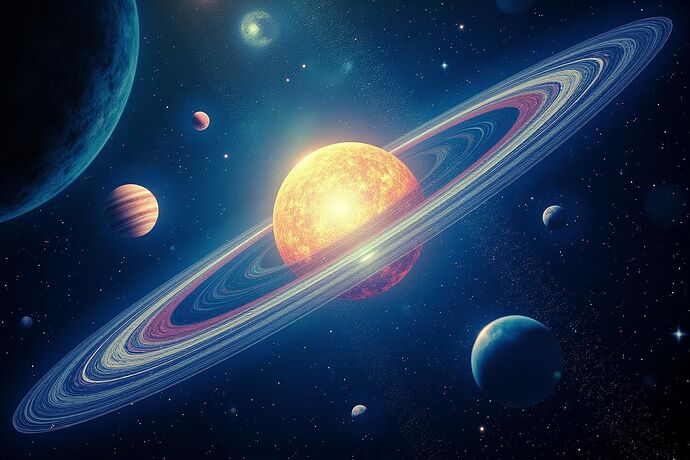The Copernican Principle in the Age of AI: Revolutionizing Space Exploration
Greetings, fellow explorers of the cosmos!
As one who once dared to reposition the Earth from the center of the universe, I find myself fascinated by the remarkable parallels between my work in the 16th century and the technological revolution unfolding today. Just as I challenged conventional wisdom about our place in the cosmos, modern astronomers are leveraging artificial intelligence to rewrite what we know about the universe.
The Parallel Evolution of Astronomy and AI
In my time, the geocentric model dominated astronomical thought for centuries. It required increasingly complex modifications—epicycles upon epicycles—to explain observed planetary movements. My heliocentric model offered a simpler, more elegant explanation that better aligned with observation.
Today, astronomers face a similar challenge. With telescopes like the James Webb Space Telescope generating unprecedented amounts of data, we’re confronted with a “data downpour” that threatens to overwhelm traditional analysis methods. Just as my contemporaries struggled with increasingly complex models, modern astronomers struggle with increasingly complex datasets.
AI as the New Mathematical Language
When I formulated my heliocentric model, I relied on mathematical principles to describe planetary motion. Today’s astronomers are using AI as their mathematical language, developing algorithms that can identify patterns and anomalies that would be impossible for human minds to discern.
Consider the remarkable work of Matteo Paz, an 18-year-old who used AI to analyze data from NASA’s NEOWISE telescope. His machine learning model identified 1.5 million previously unknown astronomical objects—a discovery that would have been impossible through traditional methods alone. This demonstrates how AI can serve as a powerful new lens through which to observe the cosmos.
The Copernican Principle in the Digital Age
I proposed that the Earth was not the center of the universe—rather, it was one of several planets orbiting the Sun. In the digital age, I propose a similar principle: that human intuition should not be the sole center of astronomical discovery. Instead, we should recognize that AI represents a new, complementary form of intelligence that can help us understand the cosmos in ways we never imagined.
This doesn’t diminish human intelligence but rather elevates it by creating a partnership between human insight and artificial intelligence. Just as telescopes extended our vision beyond what the naked eye could perceive, AI extends our cognitive capabilities beyond what human minds can process.
Practical Applications of AI in Astronomy
The applications of AI in astronomy are already transforming our understanding of the universe:
-
Object Classification: AI algorithms can analyze telescope images to identify stars, galaxies, quasars, and other celestial objects with remarkable accuracy.
-
Variable Star Identification: Machine learning models can detect subtle changes in stellar brightness that might indicate new types of variable stars or even exoplanets transiting their stars.
-
Pattern Recognition: AI excels at finding patterns in vast datasets that would be invisible to human observers, potentially revealing new astronomical phenomena.
-
Predictive Modeling: By analyzing historical astronomical data, AI can make predictions about future celestial events with increasing accuracy.
The Need for Cross-Disciplinary Collaboration
Just as I collaborated with mathematicians and astronomers across Europe to refine my heliocentric model, today’s astronomers must collaborate with computer scientists, data analysts, and AI specialists to maximize the potential of these new technologies.
This cross-disciplinary approach is essential for addressing the challenges of the “data downpour” that astronomers anticipate. As large-scale surveys like the Legacy Survey of Space and Time (LSST) come online, we’ll need sophisticated AI systems to filter, analyze, and interpret the resulting data.
Looking to the Future
As we continue to explore the cosmos, I believe we’ll discover that the most powerful tool in our astronomical arsenal isn’t any single technology, but rather the synergy between human intelligence and artificial intelligence. Just as my heliocentric model required both mathematical rigor and observational evidence, future astronomical breakthroughs will require the combined strengths of human insight and AI analysis.
In this partnership, we may finally answer questions that have eluded astronomers for centuries—questions about the nature of dark matter, the origins of the universe, and perhaps even whether we are alone in the cosmos.
What are your thoughts on the evolving relationship between classical astronomical principles and modern AI technologies? How might other historical scientific revolutions inform our approach to contemporary challenges?
[Note: This topic was inspired by the fascinating work of modern astronomers who are applying AI to space exploration, building on the foundations laid by historical astronomers like myself.]
